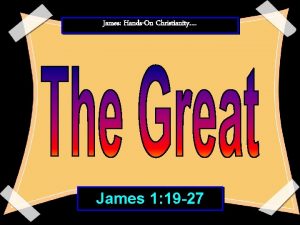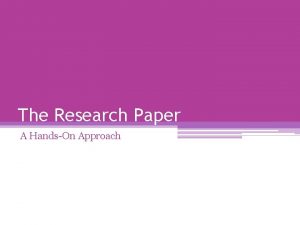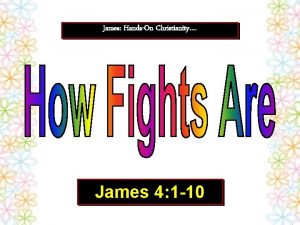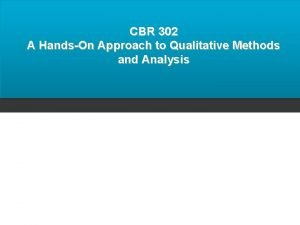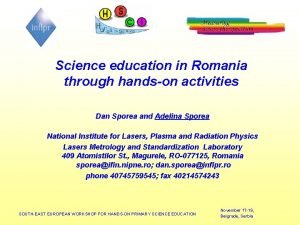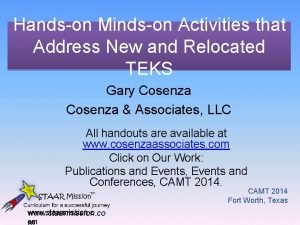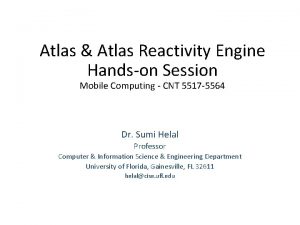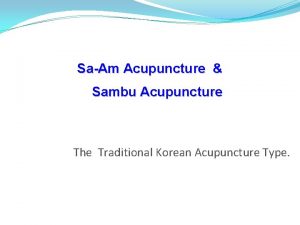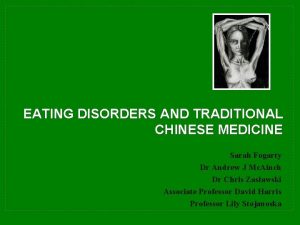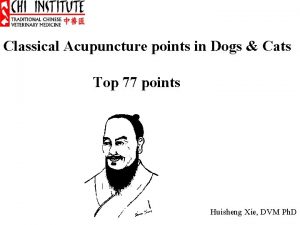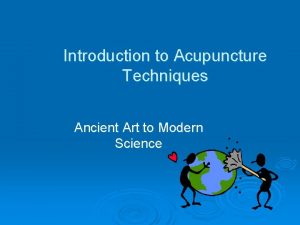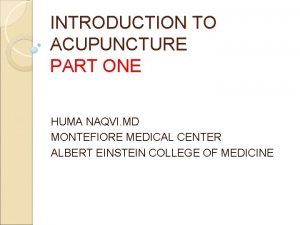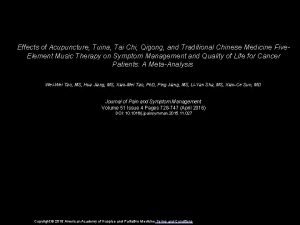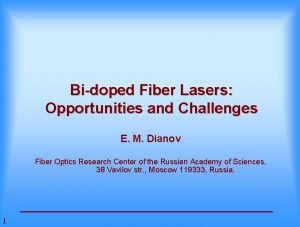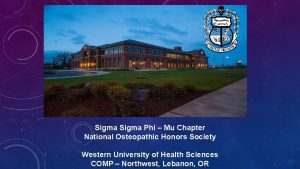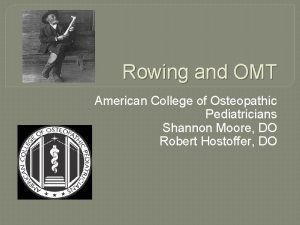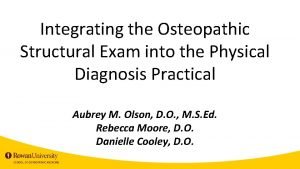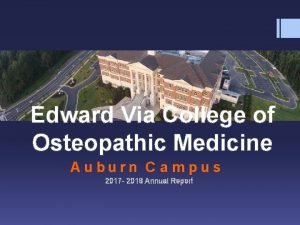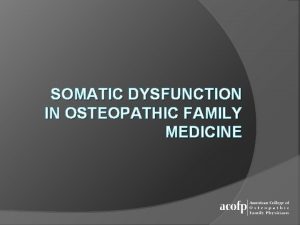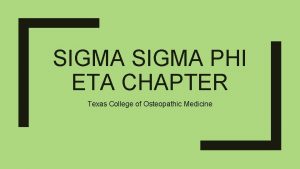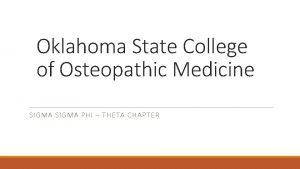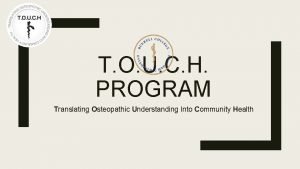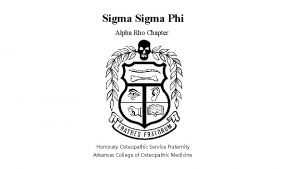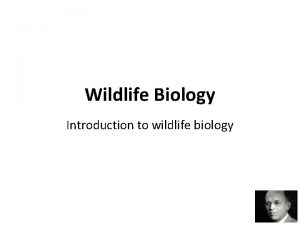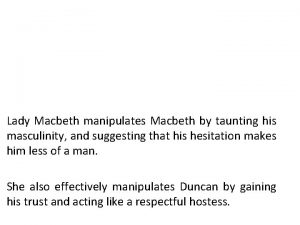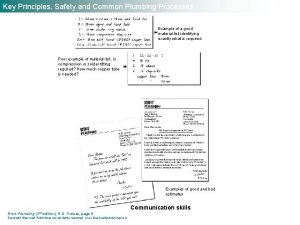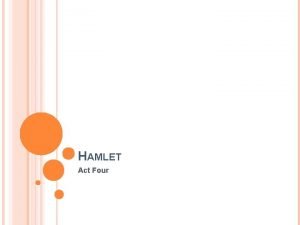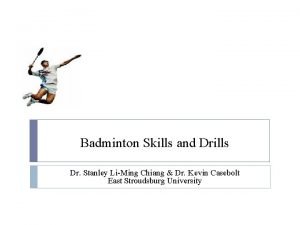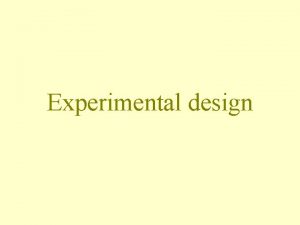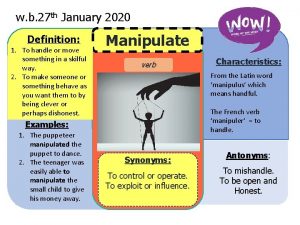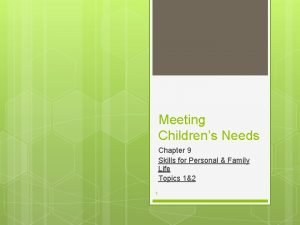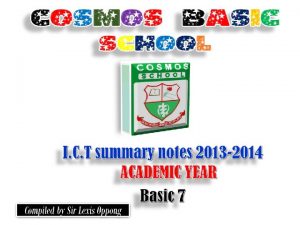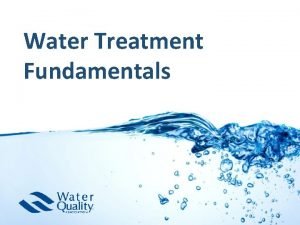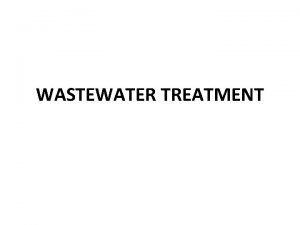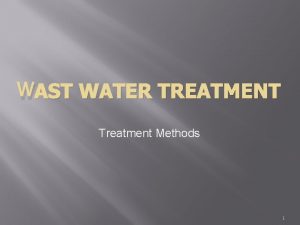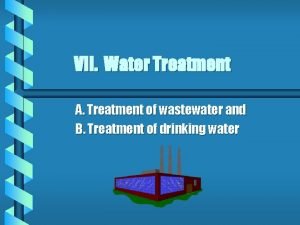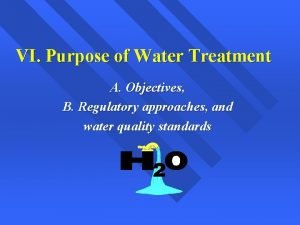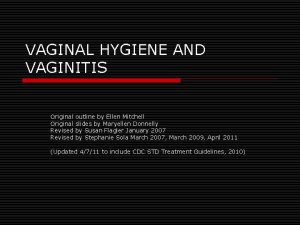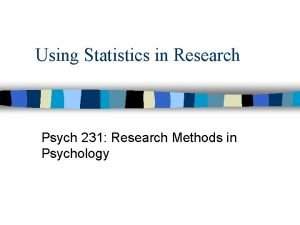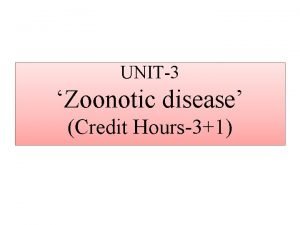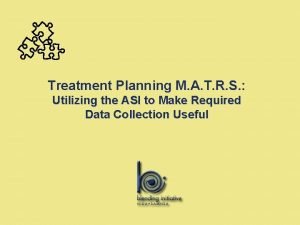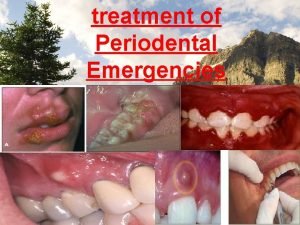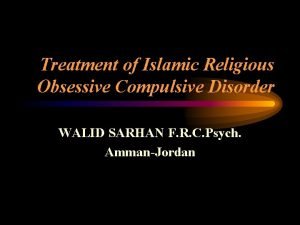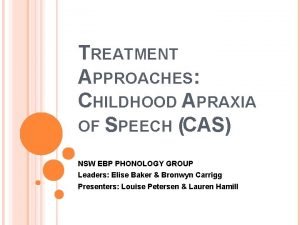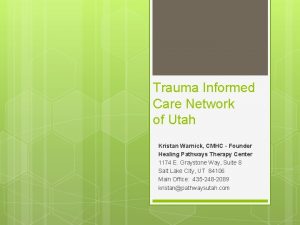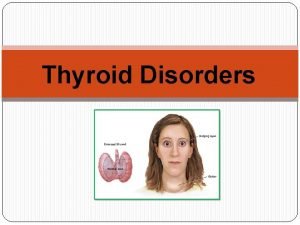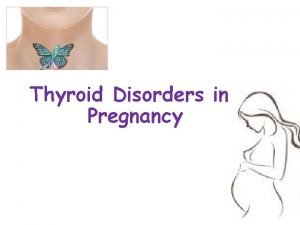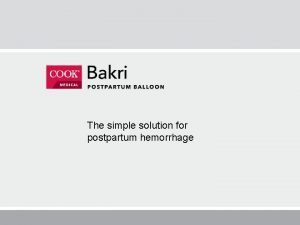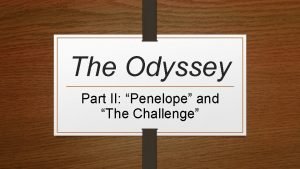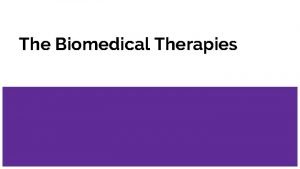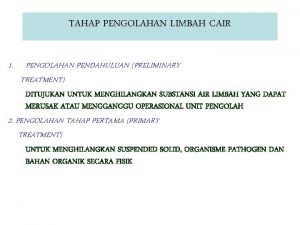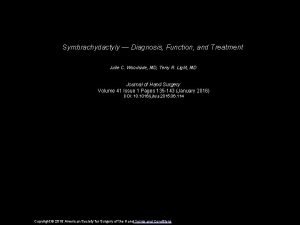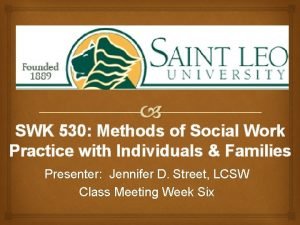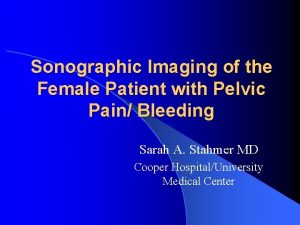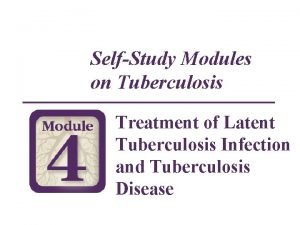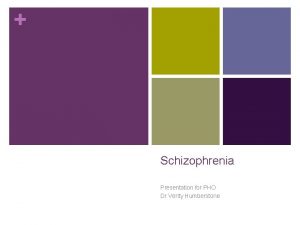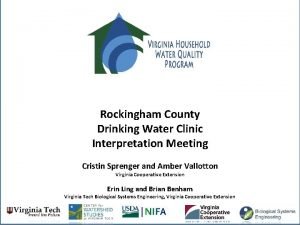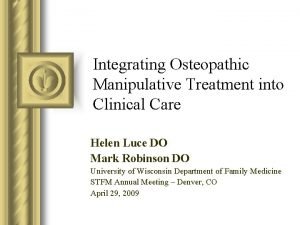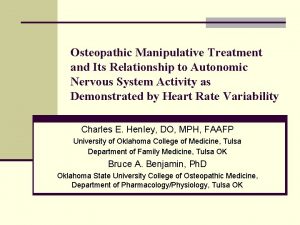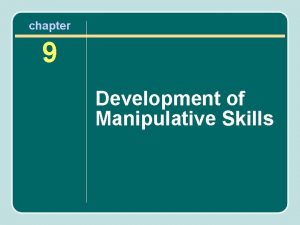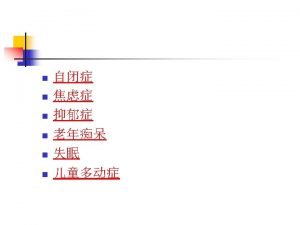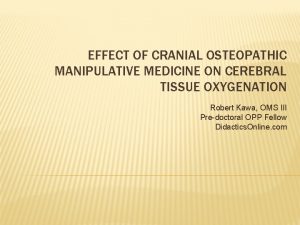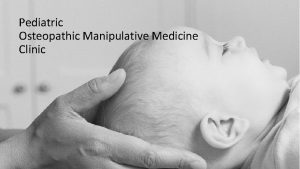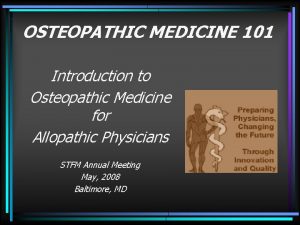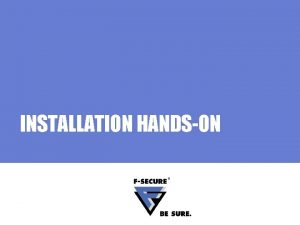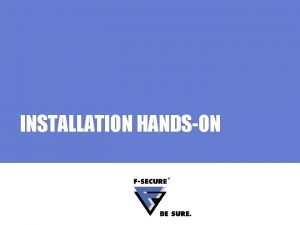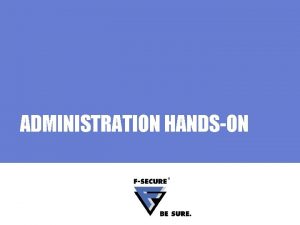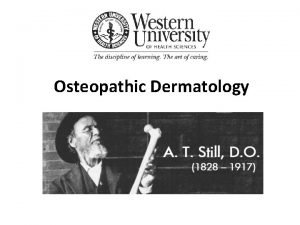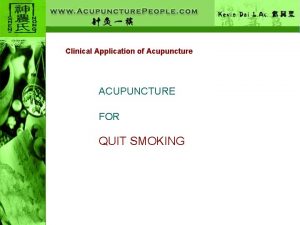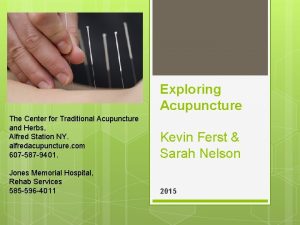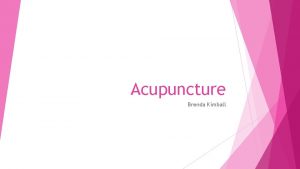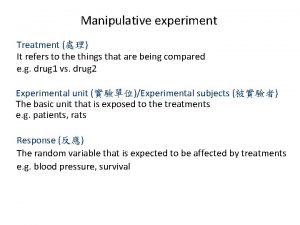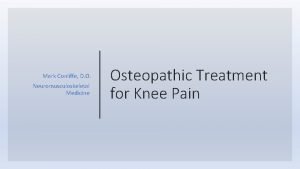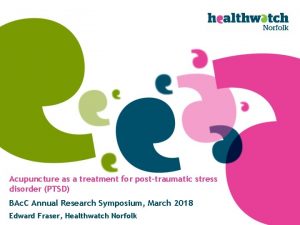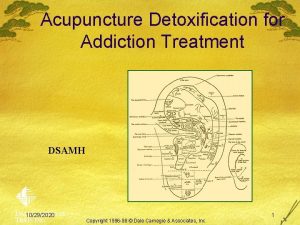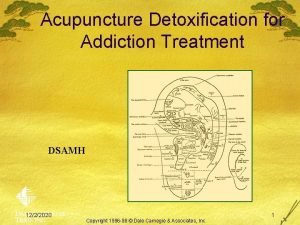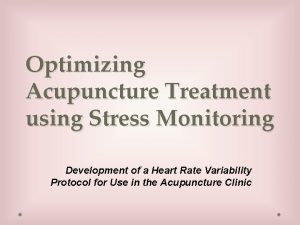A HandsOn Introduction to Osteopathic Manipulative Treatment Acupuncture







































































- Slides: 71

A Hands-On Introduction to Osteopathic Manipulative Treatment & Acupuncture in a Case of Low Back Pain Gautam J. Desai, D. O. Physician Educator, Dept of Medical Affairs Associate Professor, Dept of Family Medicine Kansas City University of Medicine & Biosciences College of Osteopathic Medicine Mary P. Guerrera, MD, FAAFP, DABMA Associate Professor, Dept of Family Medicine University of Connecticut School of Medicine W. Joshua Cox, D. O. Assistant Professor, Dept of Family Medicine Kansas City University of Medicine & Biosciences College of Osteopathic Medicine 1

This presentation was made possible by Grant Number 5 R 25 AT 000529 -03 from the National Center for Complementary and Alternative Medicine (NCCAM) and the American Student Medical Association Foundation (AMSA Foundation) - its contents are solely the responsibility of the speakers and do not necessarily represent the official views of the NCCAM, the National Institutes of Health, or AMSA. 2

Prevalence of CAM use in the US Tindle, Eisenberg, et al. January/February 2005 Alternative Therapies in Health and Medicine – compared CAM usage from 1997 -2002 > 1 in 3 U. S. adults (36. 5 and 35. 0 %, respectively) used at least 1 form of CAM. Over the 5 yrs between the 2 most recent surveys, the total using any CAM stable at 72 million BUT, changes in the choice of CAM Largest change = 50 % jump in herbal use, 12. 1% - 18. 6% Yoga increased 40 %, from 3. 7 % in 1997 to 5. 1 % Use of CAM therapies such as acupuncture, biofeedback, energy healing, and hypnosis remained essentially unchanged btw 1997 - 2002, while use of homeopathy, high-dose vitamins, chiropractic, and massage therapy declined slightly. 3

Other Changes Only 5 % of people who used herbs saw a herbal practitioner in 2002 (vs. 15% in 1997) More self-treatment, possibly based on advertising DSHEA 4

Medicine in the latter half of the 19 th Century Heroic Medicine Every effort made to “preserve the life force” Stimulants if the patient drowsy Hypnotics if the patient agitated Effort aimed at “conquering” disease Enough force, enough drugs would cast out the demons 5

Medicine in the latter half of the 19 th Century The “magic bullet” a drug called “ 606” (later renamed “salvorsan”) discovered by Paul Erlich in 1910 A. T. Still was well trained in these areas and believed they did not work. Searching for a more effective method of healing 6

The Still Approach If drugs didn’t work If purgatives and cathartics didn’t work What would work… 7

Osteopathic Approach “To find health should be the object of the doctor. Anyone can find disease. ” A. T. Still, M. D. , D. O. 8

The Four Tenets of Osteopathy 1. Person is a unit of body, mind, and spirit. 2. The body is capable of self regulation, self healing, and health maintenance. 3. Structure and function are reciprocally interrelated. 4. Rational treatment is based on an understanding of the basic principles of body unity, self regulation, and the interrelationship of structure and function. 9

First School of Osteopathy October 3, 1892 The American School of Osteopathy (ASO) was chartered 10

Evidence for use of OMT Andersson GBJ, Lucente T, Davis A, et al, A Comparison of Osteopathic Spinal Manipulation with Standard Care for Patients with Low Back Pain N Engl J Med. 1999; 341 (19): 1426 -1431 Standard Medical Care (n=72) vs OMT group (n=83) both groups improved during 12 weeks. no statistically significant difference between the two groups in any of the primary outcome measures. osteopathic-treatment group required significantly less meds (analgesics, antiinflammatory agents, and muscle relaxants) (P< 0. 001) and used less PT (0. 2 percent vs. 2. 6 percent, P<0. 05). Conclusions OMT and standard medical care have similar clinical results in patients with subacute low back pain. However, use of meds is greater with standard care. 11

Practice Patterns Review of 1999 National Ambulatory Medical Care Survey comparing DO’s v. MD’s when the dx was “musculoskeletal disorder” Some differences seen in this study DOs spent more time with patients, DOs provided more manual and complementary therapies. MDs ordered more diagnostic tests MDs prescribed more medications. Sun C, Desai G, Pucci D, Jew S: Management of Musculoskeletal Disorders: Does the Osteopathic Profession Demonstrate Its Unique and Distinctive Characteristics? Journal of the American Osteopathic Association, April 2004, vol 104, number 4 12

Safety of OMT Adverse events: 1 in 400, 000 treatments to 1 in 1 million Higher incidence of side effects from meds vs OMT Koss RW, Quality Assurance Monitoring of OMT, JAOA. 1990; 90(5): 427 -434 Fractures 13

Overall Absolute OMT Contraindications Open wounds Fever > 102 degrees avoid lymphatic spread of pathogen De novo diagnosed carcinoma avoid spread avoid possible fracture of fragile bone Osteogenesis imperfecta 14

Overall Relative OMT Contraindications Continuous pain not improving with OMT think of other etiologies Systemic signs of illness fever, weight loss, fatigue loss of strength Neurological deficits 15

Some OMT Types Soft Tissue Muscle Energy High velocity, low amplitude Counterstrain Still’s technique, Myofascial Craniosacral Facilitated Positional Release, Visceral Techniques 16

Potential Causes of Somatic Dysfunction The ‘OJ’ sprint through the airport with one shoulder bag Cramped seats Prolonged immobilization of joints/muscles Pre-existing conditions RA, OA Being a delivery guy 17

TART Findings – Hands On Activity with a Partner (20 min) Tissue Texture Changes Asymmetry Restriction of Motion Tenderness 18

Exploring Acupuncture STFM 40 th Annual Spring Conf 27 April 2007 Mary P. Guerrera, MD, FAAFP, DABMA Associate Professor Univ of Connecticut SOM Department of Family Medicine 19

YIN & YANG 20

21

AARP & NCCAM: Jan 2007 22

Integrative Medicine~ “Integrative Medicine is healing oriented & emphasizes the centrality of the doctor-patient relationship. It focuses on the least invasive, least toxic, & least costly methods to help facilitate health by integrating both allopathic & complementary therapies. These are recommended based on an understanding of the physical, emotional, psychological, & spiritual aspects of the individual. ” Rakel D. Editor. Inegrative Medicine. Saunders: 2003. p 5.

Acupuncture: definition “Insertion of a needle into the skin & underlying tissues in special sites, known as points, for therapeutic or preventive purposes. ” Ernst E. Desktop Guide to CAM: An EB approach. 2 nd ed. 2006.

World Health Organization (WHO) Viewpoint on Acupuncture Inter-regional seminar Beijing (Peking) 1979 Participants from 12 countries Drew up provisional list of diseases that may be treated with acupuncture…

WHO Viewpoint on Acupuncture: Respiratory Tract Acute sinusitis Acute rhinitis Common cold Acute tonsillitis Bronchopulmonary Disorders Acute bronchitis Bronchial asthma Disorders of ENT Acute conjunctivitis Central retinitis Myopia (in children) Cataract (without complications) Toothache Pain after tooth extraction Gingivitis Acute and chronic pharyngitis WHO. Viewpoint on Acupuncture. Geneva, Switzerland: WHO, 1979.

Gastrointestinal Disorders Spasm of the esophagus and cardia Hiccups Gastroptosis Acute and chronic gastritis Gastric hyperacidity Chronic duodenal ulcer Acute and chronic colitis Acute bacterial dysentery Constipation Diarrhea Paralytic ileus Neurologic and Orthopedic Disorders Headache/Migraine Trigeminal neuralgia Facial paralysis Paralysis post-sz fit Peripheral neuropathy Paralysis caused by poliomyelitis Meniere’s syndrome Neurogenic bladder dysfunction Nocturnal enuresis Intercostal neuralgia Periarthritis humeroscapularis Tennis elbow Sciatica, lumbar pain 27 Rheumatoid arthritis

Evidence Based Medicine (EBM) & Acupuncture NIH Consensus Development Panel 1997: Scientists, Researchers, Practitioners. Effective Tx: nausea due to surgical anesthesia & cancer chemotx, & post-op dental pain. Useful adjunct/acceptable alternative: Addiction, Stroke rehab, OA, HA, LBP, tennis elbow, menstrual cramps, carpal tunnel, fibromyalgia. NIH Consensus statement on acupuncture. JAMA 280: 15181524, 1998.

‘There is sufficient evidence of acupuncture's value to expand its use into conventional medicine and to encourage further studies of its physiology and clinical value. ’ NIH Consensus statement on acupuncture. JAMA 280: 15181524, 1998.

Of note~ Since the 1997 NIH Consensus Panel on Acupuncture there have been >100+ Randomized Controlled Trials. 30

Results of Systematic Reviews: Positive Inconclusive Negative Chronic back pain Addictions Lat Elbow pn RA Dental pain Asthma Myofascial pn Smoking Fibromyalgia Bell’s palsy Neck pain Wt loss GI endoscopy Cancer pain OA Idiopathic HA Depression 1 dysmennrh Post-op N & V Facial pain Sciatica Oocyte retrval pn Induc labor Surgical pain OA knee Inflam Rhem ds Stroke Insomnia Tinnitus Labor pain TMJ dysfunc Ernst E. Editor. The Desktop Guide to CAM: an evidence-based approach. 2 nd ed Mosby 2006, p 295.

“Because of numerous methodological & other problems, the current evidence allows ample room for interpretations. ” Ernst E. Desktop Guide to CAM: An EB approach. 2 ed. 2006, p. 294.

Results of Controlled Clinical Trials of Acup by Country of Research: Country USA China Sweden UK Demark Germany Canada Russia Total trials Favoring Acupuncture Number % 47 36 27 20 16 16 11 11 25 36 16 12 8 10 3 10 After Vickers 1998. Berman B. EMB & Medical Acupuncture in the 21 st Century. Amer Acad Med Acup Symp. April 24 -27, 2003. 53 100 59 60 50 63 27 91

Why so many Inconclusive Results? Poor methodological quality Small trials w/insufficient power Large number of drop outs Improper blinding doubts about reliability Inadequate tx Berman B. EBM & Medical Acupuncture in the 21 st Century. Amer Acad Med Acup Symp. April 24 -27, 2003.

Why Acupuncture Efficacy RCTs may not capture real-life effectiveness: Acupuncture studies do not always resemble clinical practice: Contextualized tx approach Individualized tx approach Berman B. EBM & Medical Acupuncture in the 21 st Century. Amer Acad Med Acup Symp. April 24 -27, 2003.

Is Acupuncture Safe? A Systematic Review of Case Reports. Lixing Lao, Ph. D, LAc. et al. Altern Ther Health Med 2003: 9(1): 72 -83. Searched 9 data-bases from 1965 -1999 for all first-hand case reports of complications & adverse effects in English lang. Two reviewers. 202 incidents identified in 98 relevant papers reported from 22 countries. 36

Lixing Lao et al. cont… Results: Complications included infections (hepatitis) & organ, tissue & nerve injury. Adverse effects included cutaneous disorders, hypotension, fainting & vomiting. Trend toward fewer reported serious complication after 1988. 37

38

Lixing Lao et al. cont… Conclusions: “Declines in adverse reports may suggest that recent practices, such as clean needle techniques & more rigorous acupuncturist training requirements, have reduced the risks associated with the procedure. Therefore, acupuncture performed by trained practitioners using clean needle techniques is a generally safe procedure. ” 39

? Safety~ 2 Prospective Studies in UK: Mac. Pherson H, et al. The York acupuncture safety study: prospective survey of 34, 000 treatments by traditional acupuncturists. BMJ. 2001; 323: 486 -7. White A, et al. Adverse events following acupuncture: prospective survey of 32, 000 consultations w/doctors & physiotherapists. BMJ. 2001; 323: 485 -6. Both studies found no serious events in 66, 000 consultations. 40

? Safety ~ Systematic review of 9 prospective studies: Ernst E, et al. Prospective studies of the safety of acupuncture: a systematic review. Am J Med. 2001; 110: 481 -5. Almost 250, 000 txs. Most serious adverse effects: 2 cases of pneumothorax, 2 cases of a broken needle. 41

Non-acupoint stimulation (control = c) compared with visual (a) & acupoint (b) stimulation. 42

Wu et al. (Neuro. Image, 2002) 1 st study to report direct brain-acupoint correlation using electroacupuncture advantage of objective settings of stimulation Used two acupoints of therapeutic effect for eye disease (GB 37) & ear disease (GB 43). 43

General Considerations - LBP # 2 reason for OV in US majority do not require surgical intervention massive financial burden cost of treatment expense of lost work legal costs (workman's comp, disability, personal injury) 44

Case Intro David D. , a 45 y. o. father of 2 children (ages 3 and 5), works as a delivery man Presents with constant back pain of moderate – severe intensity, isolated to the lower lumbar spine. Also, c/o tight muscles in same region. He usually does ok until he has a heavy load day, or works overtime, which seems to cause a flare in back pain. No ‘red flags’ for LBP 45

Soft Tissue Technique – Dr. Cox A direct technique (engages a restrictive barrier) which involves stretching, deep pressure, traction, and/or separation of muscle origin and insertion while monitoring tissue response. Lumbar Soft tissue – objective is to relax the paravertebral muscles Repeat until desired effect 46

Lumbar Soft Tissue Technique Prone traction Stand at side of table, place cephalad hand over base of sacrum with fingers pointing toward feet, place other hand on the paravertebral muscles with fingers pointing toward head. Exert separating tractional force in directions fingers are pointing. Intermittent or sustained inhibition Prone pressure with counter leverage Stand at side of table, contact pt’s opposite side, grasp musculature with cephalad hand, apply anterior and lateral force. Contact ASIS with caudad hand apply upward force. Use kneading or deep inhibitory pressure 47

Myofascial Release (MFR) Designed to stretch and release restriction of fascia and muscle Goals Assess and modify maladaptive patterns Search out tight and loose “end-feels” • Dynamic barriers – Soft tissue/bony impediment to inherent motion • Static barriers – Soft tissue, bony impediment to passive motion 48

Myofascial Release Treatment goals Release tension Restore 3 dimensional patterns to functional symmetry Direct and indirect treatments 49

Myofascial Release Direct treatments Define areas of tightness by holding tissue firmly into barrier of restriction Wait for tissue release (tissue creep) Art lies in being able to follow tissue response as release begins 50

Myofascial Release Indirect treatments Move the tissue in 3 dimensions away from restrictive barrier Subtle release of tissue Art lies in being able to keep the tissues in a “loose” fashion while the body “unwinds” 51

Myofascial Release Post treatment discomfort (rare) Temporary increase of pain on 1 st or 2 nd treatment Analogous to post exercise soreness • Lupus and fibromyalgia patients can have repeated flare-ups 52

MFR Place hands on lumbar paravertebral muscles and move in all planes, assessing the motion Direct take fascia where it does not want to go, and wait a few seconds. Indirect take fascia where it likes to go, wait few seconds, and then move back to neutral as tissue relaxes 53

Muscle Energy A form of OMT wherein pt’s ms. are actively used, in a specific direction and against specific counterforce from a specific position A direct technique (engages the restrictive barrier and then carries the dysfunctional component into the restrictive barrier) 54

Basics Using pt’s “muscle energy” as activating force Dr. counteracts pt’s force Isometric = no mvmt in active phase ms are same length achieve relaxation after contraction of ms 55

Utility Mobilize joints where mvmt is restricted Stretch tight muscles and fascia Improve local circulation Balance neuromuscular relationships to alter muscle tone 56

Advantages Safer than HVLA gentle technique better for elderly also for those with osteoporosis/risks thereof 57

Contraindications Open wounds Broken bones Uncooperative patients Unresponsive patients Severe pain 58

Goals of ME Strengthen weaker side of asymm. Decrease hypertonicity Lengthen muscle fibers Reduce restriction of motion Alter related resp. and circ. fxn Make the patient feel better 59

Technique Simplified Position body part at point of initial resistance As pt. moving part away from restriction, dr. providing equal counterforce to achieve isometric state, while monitoring pt to ensure proper position Hold for about 5 seconds, and both pt and dr relax simultaneously (repeat 3 -5 times or until no new barriers) Recheck motion 60

Muscle Energy Treatment Restriction of hip flexion (from tight extensors) Fully flex the hip while pt supine Ask the patient to gently extend leg while the doc resists motion for 3 -5 seconds During relaxation, move further into barrier and then repeat the process until no new barriers are reached 61

Still Technique A specific, non-repetitive articulatory method that is indirect then direct, and is attributed to A. T. Still Can be used to treat regional and segmental dysfunction Typically a supine treatment, but if concept is applied, it can be performed from nearly any position to adapt to a specific patient 62

Still Technique Simplification Place dysfunctional area where it wants to go (indirect). Add a compressive or traction force and articulate it to where it doesn’t want to go, thus engaging the restrictive barrier (direct). Remove force and place pt back in neutral position. Reassess 63

Lumbar Still Technique For regional dysfunction (group curve): Pt supine, stand on side of concavity (side of side bending component). Contact pt’s lumbar transverse process with cephalad index finger, supporting the muscles with palm, this is the monitoring hand. Grasp pt’s knee on same side with caudad hand flex knee and hip until motion/relaxation felt at monitoring hand or approx 90 deg Then move monitoring hand to knee, and caudad hand to leg around ankle. Induce internal rotation (pull lower leg lateral) and adduction by pushing knee medially. This sidebends toward concavity and rotates away - indirect (induces tissue relaxation) Press down with 5 # pressure on knee toward the table in direction where monitoring hand had been. Maintaining compression, carry knee through neutral and then abduction and external rotation in articulatory manner. Pt’s leg brought back to extended, neutral supine position. Reassess. 64

Acupuncture Demo 65

CAM Resources for Educators www. amsa. org/humed/CAM/resources. cfm 1. Stress Reduction, Relaxation, and Wellness: A Didactic and Experiential Workshop 2. Introduction to Evidence-Based Complementary & Alternative Medicine 66

Core Curriculum CAM Integration in 10 categories: 1. Nutrition and Lifestyle: Diet, Exercise, Sleep and Stress Management 2. Mind-Body Medicines 3. Alternative Systems of Medical Thought: Traditional Chinese Medicine, Kampo, Tibetan Medicine and Acupuncture 4. Alternative Systems of Medical Thought: Yoga, Ayurveda, Native American and Yoruba Based Medicines 5. Alternative Systems of Medical Thought: Homeopathy and Flower Essences 67

Core Curriculum CAM Integration in 10 categories: 6. Bioenergetic Medicines 7. Pharmacologic/Biologically Based: Herbal Medicines 8. Pharmacologic/Biologically Based: Nutrition, Dietary Supplements & Vitamins 9. Manipulative Therapies: Chiropractic and Osteopathy 10. Manipulative Therapies: Therapeutic Massage 68

EDCAM Site D. CAM Clinical Interviewing: CAM History Taking, Holistic Interviewing, Patient. Centered Interviewing and Cultural Competency E. Integrative Medicine Field Study: CAM Research, Literature Search, Community Service Project and CAM Mentorship F. U. S. and International CAM Electives: Clinical or Exploratory 69

EDCAM Site STUDENT WELLNESS MODULE • Healing the Healer https: //www. amsa. org/healingthehealer/ EVALUATION TOOLS • Pilot School Student Survey 70

OTHER EDUCATION RESOURCES Consortium of Academic Health Centers for Integrative Medicine, Curriculum in Integrative Medicine: A Guide for Medical Educators http: //www. imconsortium. org/html/education. php The George Washington Institute for Spirituality and Health http: //www. gwish. org/index. htm University of Arizona Program in Integrative Medicine http: //www. integrativemedicine. arizona. edu/ American Osteopathic Association http: //history. aoa-net. org/Osteopathy/osteopathy. htm 71
 This is the religion that god accepts
This is the religion that god accepts Alsa route plugin
Alsa route plugin Analytical research
Analytical research James handson
James handson James handson
James handson A handson
A handson Handson activities
Handson activities Handson activities
Handson activities Handson session
Handson session Lu
Lu Sarah fogarty
Sarah fogarty Ding chuan acupuncture point
Ding chuan acupuncture point Liao yuan
Liao yuan Dr huma naqvi
Dr huma naqvi Kung fu panda acupuncture
Kung fu panda acupuncture Al500 acupuncture laser
Al500 acupuncture laser Acupuncture for incontinence
Acupuncture for incontinence Psi sigma alpha osteopathic honor society
Psi sigma alpha osteopathic honor society American college of osteopathic pediatricians
American college of osteopathic pediatricians Osteopathic physical exam template
Osteopathic physical exam template Edward via college of osteopathic medicine auburn
Edward via college of osteopathic medicine auburn Urt
Urt Psi sigma alpha osteopathic honor society
Psi sigma alpha osteopathic honor society Oklahoma state college of osteopathic medicine
Oklahoma state college of osteopathic medicine Ouhcom touch hours
Ouhcom touch hours Alpha omega alpha osteopathic
Alpha omega alpha osteopathic Manipulative management wildlife
Manipulative management wildlife What are the scientific skills
What are the scientific skills Macbeth is easily manipulated
Macbeth is easily manipulated Non manipulative compression fittings
Non manipulative compression fittings Quotes of claudius being manipulative
Quotes of claudius being manipulative Underarm backhand serve in badminton
Underarm backhand serve in badminton Fh and bh smash badminton
Fh and bh smash badminton Integer chips virtual manipulative
Integer chips virtual manipulative Advantages and disadvantages of micrometer screw gauge
Advantages and disadvantages of micrometer screw gauge Experiment vs study
Experiment vs study What is manipulation
What is manipulation Manipulative-constructive play definition
Manipulative-constructive play definition Xsgare
Xsgare Body paragraph structure
Body paragraph structure Water treatment fundamentals
Water treatment fundamentals Anaerobic methane digester frq
Anaerobic methane digester frq Purpose of wastewater treatment
Purpose of wastewater treatment Characteristics of aquaculture
Characteristics of aquaculture Horizontal flow grit chamber
Horizontal flow grit chamber Wast water treatment
Wast water treatment Wastewater treatment process primary secondary tertiary
Wastewater treatment process primary secondary tertiary Objectives of water treatment
Objectives of water treatment What does bv look like
What does bv look like Treatment levels statistics
Treatment levels statistics Astelazine
Astelazine Q
Q Treatment plan problem statement examples
Treatment plan problem statement examples Etiotropic phase
Etiotropic phase Treatment of herpetic gingivostomatitis
Treatment of herpetic gingivostomatitis Ocd treatment in islam
Ocd treatment in islam Cas treatment approaches
Cas treatment approaches Trauma awareness and treatment center utah
Trauma awareness and treatment center utah Function of thyroxine
Function of thyroxine Treatment for hyperthyroidism in pregnancy
Treatment for hyperthyroidism in pregnancy Cho suture
Cho suture The challenge odyssey
The challenge odyssey Biomedical therapy
Biomedical therapy Preliminary treatment adalah
Preliminary treatment adalah Symbrachydactyly treatment before and after
Symbrachydactyly treatment before and after Social work treatment plan example
Social work treatment plan example Orthopaedic services east london
Orthopaedic services east london Fluid in cul de sac treatment
Fluid in cul de sac treatment Intensive phase of tb treatment
Intensive phase of tb treatment First-line treatment for schizophrenia
First-line treatment for schizophrenia Royalty account is which type of account
Royalty account is which type of account Water treatment rockingham county
Water treatment rockingham county
